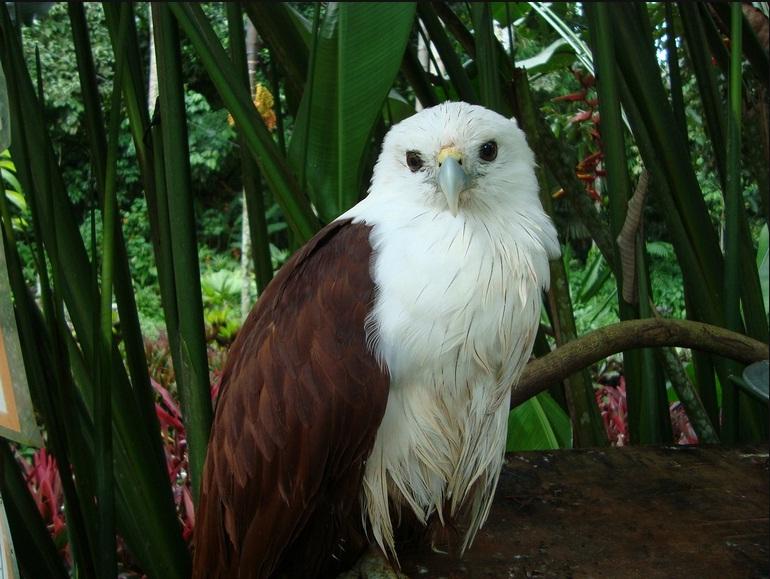
Davao is a home of the largest and the greatest eagle in the world – the Philippine Monkey-eating Eagle, considered as the Philippine national bird. The Philippine Eagle Center is a peaceful sanctuary of 36 Philippine Eagles, ten other bird species, four mammal species, and two reptile species. The Philippine Eagle Center is established with the help of the sponsorship of the Philippines Eagle Foundation, a private, non-stock, non-profit association committed in saving the endangered Philippine Eagle and its forest territory. The place is also the best destination for educational tours, especially about learning the ecology and the ecosystem.
The Monkey-eating Eagle is endemic to the eastern part of the Philippine encompassing the Sierra Madre Mountains in Eastern Luzon; it can also be found in the closely forested areas of Mindanao Province. The largest eagle is about 3 and ½ feet high. It is very powerful and has strong legs and claws. The lives of the eagles are being strictly monitored because they are now in danger of being extinct.
Pag-asa, the first eagle to be bred in captivity, can also be found in this center. He's one of the most popular tourist attractions in this place.
Lecture on the following(optional)
- Philippine Eagle Foundation and its programs
- Conservation Breeding Program
- Field Research Program
- Community Based Program
- Conservation Education Program
- Captive Breeding Techniques
Special Education Program
The Philippine Eagle Center offers educational programs for visitors such as:
Keeper Talk
This activity is offered at a specific time. The bird's keeper or caretaker will talk about the bird's biology, characteristics, interesting facts and life at the Center. This activity gives the visitors an opportunity to interact with the keeper and its ward. It also helps the visitors have a deeper understanding of the bird's life cycle and environment.
Falconry
This activity is a guarantee that visitors will never forget their trip at the Center. This time, the guests will not see the birds in their enclosures but on the air. Keepers will allow their wards to take flight to delight and impart knowledge to the viewers.
Open Classroom Project
This is a fun way of knowing the eagles and learning about life science. With games and enjoyable activities, students will definitely take pleasure in learning. Modules and themes are specifically designed to suit the needs and interests of Pre-school, Kindergarten, Elementary and Highschool students.
How to get there
The Philippine Eagle Center (PEC) is about an hour drive from the city and can be reached either by private or public transport. Buses going to Calinan depart every 15 minutes from the Annil Terminal located at corner Quirino and San Pedro Extension. Bus fare is about P30. From Calinan, take a pedicab going to the PEC. The ride is about 10 minutes and will cost you P6. Before entering the PEC premises, the Davao City Water District will collect an entrance fee of P5 for adults and P3 for kids. PEC entrance costs P50 for adults and P30 for youth, 18 years old and below. Tour guiding and the use of kiosks are free of charge.
Traveling time from the City Proper to Malagos
45 minutes to 1 hour, depending on traffic
Tour guiding at the Philippine Eagle Center is free of charge. It is advisable that visitors call the PEF office and book in advance to ensure the availability of tour guides during their visit.
School groups with at least 30 students will be given a 10% discount. However, the group must have to pre-book their visit and must pay in advance at the PEF Office (see Contact Page) to avail of this offer. Family groups of 10 are also provided with the same privilege.
The Philippine Eagle Center is open from 8 in the morning until 5 in the afternoon daily, including holidays.
Entrance Fees
Guests are charged a nominal fee to enter the facility. The proceeds are used to support in situ and ex situ conservation actions of the PEF.
- Adults - P50
- Youth (18 years old and below) - P30

